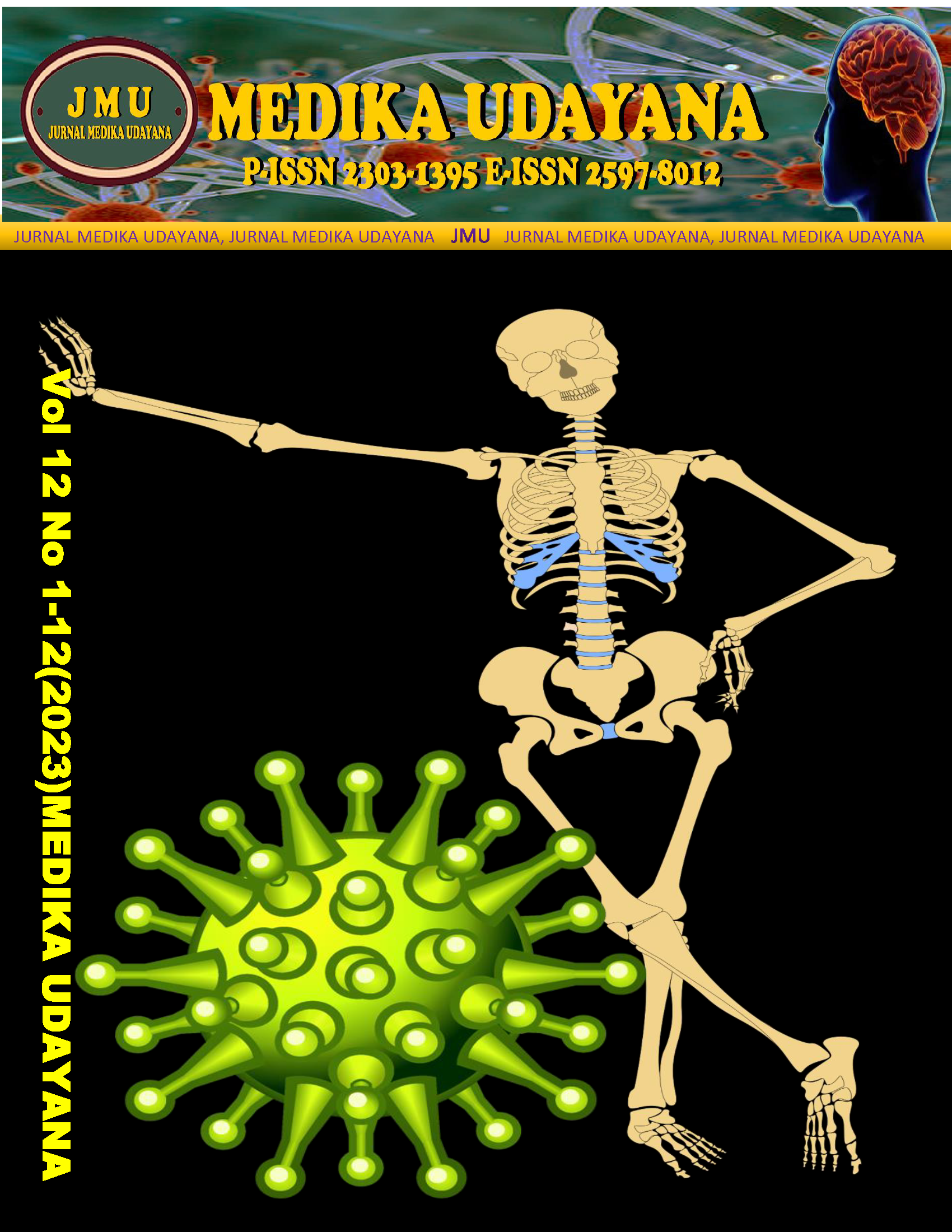PREVALENCE AND CHARACTERISTICS OF INFANTS WITH RESPIRATORY DISTRESS SYNDROME IN THE NEONATUS INTENSIVE CARE UNIT OF SANGLAH HOSPITAL IN 2020
Abstract
Respiratory distress syndrome (RDS) is a cause of respiratory distress in baby that occurs several hours after newborns and can cause respiratory arrest and even death. This study aims to provide an overview of the prevalence and characteristics of infants with RDS in neonatal intensive care unit of Sanglah Hospital in 2020. This study used a cross-sectional descriptive approach with retrospective data. The study sample was infants aged 0-28 days with RDS in the neonatal intensive care unit of Sanglah Hospital who were recorded in complete medical records from January 1, 2020 to December 31, 2020. The prevalence of infants with RDS in the neonatal intensive care unit of Sanglah Hospital in 2020 was 10.9%. All of them were singleton pregnancies with a magnitude of 0 days (63.9%), female (52.8%), and second children (50%). Most of the mothers had done prenatal care (91.7%), without a history of disease (75%), primipara (50%), and ruptured membranes <24 hours (75%). Babies born with very premature gestational age (61.1%), by cesarean section (55.6%), low birth weight (30.6%), and APGAR score 7-10 (75%). A total of 36.1% of infants used a breathing apparatus in CPAP and received first-line antibiotics (94.4%). Infants with RDS have a high variability of characteristics including the general characteristics of the history of pregnancy and childbirth. The recommendation for other researchers are expect to conduct further analytical studies in the future.











